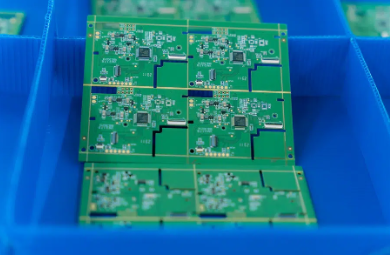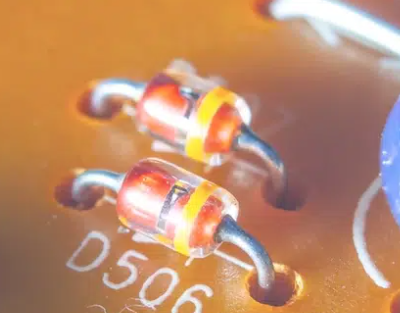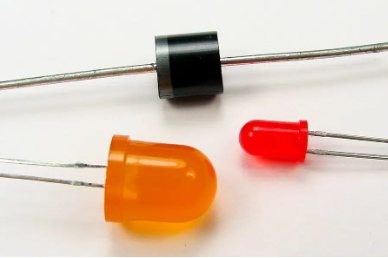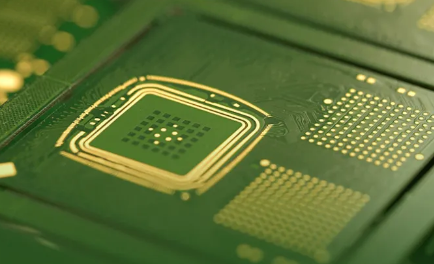PCB transmission line : types, purpose and connection
In the dynamic world of electronics, where speed, efficiency, and signal integrity reign supreme, the intricate pathways etched onto printed circuit boards (PCBs) play a pivotal role in ensuring seamless communication between components. Among these pathways, PCB transmission line standS as the unsung heroes, enabling the reliable transfer of signals critical for the functionality of modern electronic devices.

Understanding and implementing PCB transmission line theory are essential in high-speed and high-frequency PCB designs to ensure signal integrity, reduce electromagnetic interference, and maintain the overall performance of electronic devices.
What is PCB transmission line?
A PCB transmission line refers to a structure or pathway on a printed circuit board (PCB) designed to transmit electrical signals from one point to another with minimal distortion, attenuation, or interference. These transmission lines are crucial for maintaining signal integrity, especially in high-frequency applications commonly found in modern electronics.
The behavior of signals traveling along PCB transmission lines is influenced by factors such as line geometry, dielectric materials, trace width, trace thickness, and the surrounding environment. Common types of PCB transmission lines include microstrips (a single signal trace over a ground plane) and striplines (two ground planes with a signal trace sandwiched between them).
Signals on transmission lines can experience effects such as reflection, impedance mismatches, and signal degradation if not properly designed. Engineers use specific calculations and design rules to match impedance, control signal skew, minimize crosstalk, and ensure reliable signal transmission along these pathways.
What is the purpose of transmission lines?Signal Integrity: They maintain the quality of electrical signals as they travel from one point to another, especially in high-frequency applications. By managing impedance, reducing reflections, and minimizing signal distortion, transmission lines help ensure that signals reach their destination accurately.
Reducing Signal Degradation: In high-frequency systems, signals can degrade due to factors like impedance mismatch, noise, and attenuation. PCB Transmission lines are designed to minimize these issues, allowing signals to propagate with minimal distortion and loss.
Controlling Impedance: They provide a controlled impedance path for signals, matching the impedance of the source and load components. This matching prevents signal reflections and ensures efficient power transfer.
Minimizing Crosstalk: Transmission lines with proper spacing and design help reduce electromagnetic interference between adjacent signal traces, thereby preventing crosstalk that can disrupt signal quality.
Supporting High-Speed Data Transfer: In applications like telecommunications, data centers, and high-speed computing, PCB transmission lines facilitate the reliable transfer of large amounts of data by maintaining signal integrity and reducing transmission errors.
Maintaining System Stability: PCB Transmission lines contribute to system stability by preventing signal distortions that could otherwise cause malfunctions or errors in electronic devices.
What are the types of transmission lines?
The types of transmission lines
There are several types of PCB transmission lines commonly used in electronics and telecommunications, each suited for specific applications. Some of the main types include:
Coaxial Cable: Consists of a central conductor surrounded by an insulating layer, a conductive shield, and an outer insulating layer. Coaxial cables are commonly used for television signals, networking (Ethernet), and high-frequency transmission due to their ability to minimize interference.
Microstrip Line: A type of transmission line consisting of a conductor trace on one side of a dielectric substrate, with a ground plane on the other side. It’s widely used in PCB designs for its simplicity and suitability for high-frequency applications.
Stripline: Similar to microstrip, but with the signal trace sandwiched between two layers of dielectric material, usually on a PCB. Striplines offer better shielding and are often used in RF and microwave circuits.
Twin-Lead Line: Consists of two parallel conductors separated by a dielectric material. It’s used in simpler applications like antenna feed lines or low-frequency circuits.
Waveguides: Hollow metallic tubes or structures that guide electromagnetic waves. They are prevalent in microwave transmission and high-frequency applications, especially in radar systems and satellite communications.
Twisted Pair Cable: Comprises two insulated conductors twisted together. It’s commonly used in telecommunication and networking for its ability to reduce electromagnetic interference.
What is the difference between circuit and transmission line?Circuits and transmission lines are both integral parts of electronic systems but differ in their fundamental characteristics and functions:
Circuit:
- Topology of Components: Circuits refer to the interconnected arrangement of electronic components (such as resistors, capacitors, transistors, etc.) that perform specific functions, such as amplification, filtering, or signal processing.
- Signal Processing: Circuits manipulate electrical signals by processing, amplifying, or modifying them based on the arrangement and operation of the components.
- Low-Frequency Operations: Circuits are primarily used for low-frequency operations and are designed based on the principles of electrical circuit theory.
- Localized Operation: The behavior of components within a circuit is often studied and analyzed independently of the connections between components. The interconnections between components are typically assumed to have negligible effects at lower frequencies.
Transmission Line:
- Signal Propagation: PCB Transmission lines are pathways designed specifically for the efficient transmission of electrical signals from one point to another.
- Signal Integrity: They focus on maintaining signal integrity, especially in high-frequency applications, by controlling impedance, minimizing reflections, and managing signal distortion.
- High-Frequency Operations: PCB Transmission lines are crucial for high-frequency operations where the characteristics of the transmission path, such as impedance matching and signal propagation delay, significantly affect signal quality.
- Consideration of Distributed Effects: PCB Transmission lines are analyzed considering distributed effects along the length of the line. At higher frequencies, effects like signal propagation time, impedance changes, and reflections become significant and need to be managed for proper signal transmission.In essence, circuits deal with the arrangement and operation of electronic components to perform specific functions, while transmission lines are dedicated pathways designed for the efficient transmission of electrical signals, especially in high-frequency scenarios, where the distributed nature of the transmission becomes critical to maintaining signal quality.
How are transmission lines connected?
PCB Transmission lines can be connected in various ways, depending on the specific requirements of the system and the type of transmission lines being used. Here are some common methods of connecting transmission lines:
Direct Connection:
When two transmission lines need to be connected with minimal loss or interference, they can be directly joined by soldering, welding, or using connectors specifically designed for the transmission line type (like coaxial cable connectors or microstrip connectors).
Connectors and Adapters:
Various connectors and adapters are available for different types of transmission lines. Examples include BNC, SMA, N-type connectors for coaxial cables, and specialized connectors for microstrip or stripline configurations. These connectors ensure a secure and impedance-matched connection between transmission lines.
Baluns and Transformers:
Baluns (balanced to unbalanced transformers) and transformers are used to match impedance and convert between different transmission line types or impedance levels. They enable the connection between lines with different characteristics.
Transition Structures:
In cases where different types of PCB transmission lines need to be connected, transition structures are employed. For instance, transitioning from a coaxial cable to a microstrip line might involve a carefully designed structure to maintain signal integrity during the transition.
Impedance Matching Techniques:
Techniques such as stubs, tapered lines, or impedance matching networks can be used to ensure impedance continuity and minimize reflections when connecting transmission lines.
Via PCB Traces:
On a printed circuit board (PCB), transmission lines can be connected through carefully designed traces that maintain the characteristic impedance and minimize signal distortion.
Why do transmission lines need high-voltage?
PCB Transmission lines often operate at high voltages for several reasons related to power transmission efficiency, minimizing losses, and optimizing the power grid’s performance:
• Reduced Current and Power Losses: According to Ohm’s law (V = I * R), for a given power, increasing voltage reduces the current flowing through the transmission lines. Lower current results in lower resistive (I^2 * R) losses, where “R” represents the resistance of the transmission line. By transmitting power at high voltage, utilities can reduce power losses during transmission.
• Efficient Power Transfer: Higher voltages enable more efficient power transfer over long distances. The use of high-voltage transmission lines allows for the transmission of larger amounts of power without significant losses. This is crucial for delivering electricity from power plants, often located far from population centers, to where it’s needed.
• Voltage Regulation and Stability: High-voltage transmission helps in maintaining voltage levels within acceptable limits across the power grid. It facilitates better voltage regulation, reduces voltage drops, and ensures a more stable supply of electricity to consumers.
• Economic Considerations: Transmitting electricity at high voltage is more cost-effective for utilities. Although high-voltage transmission lines require higher initial investment and specialized equipment, the reduced losses during transmission translate into long-term cost savings.
• Grid Reliability: High-voltage transmission lines support the stability and reliability of the electrical grid. They enable utilities to efficiently manage and balance the supply and demand of electricity across the grid, especially during peak usage periods.
• Renewable Energy Integration: Transmission lines with higher voltages are crucial for integrating renewable energy sources (like wind or solar farms) located in remote areas into the grid. These sources often require long-distance transmission to reach areas with high electricity demand.
While high-voltage transmission lines offer several advantages, their design and operation require careful consideration of safety measures, insulation, equipment, and regulatory compliance to ensure efficient and reliable power transmission while minimizing risks to personnel and the environment.
在线留言询价

What is “component placement” in PCB?

15 Common PCB Circuit Effects
- 一周热料
- 紧缺物料秒杀
| 型号 | 品牌 | 询价 |
|---|---|---|
| CDZVT2R20B | ROHM Semiconductor | |
| TL431ACLPR | Texas Instruments | |
| MC33074DR2G | onsemi | |
| RB751G-40T2R | ROHM Semiconductor | |
| BD71847AMWV-E2 | ROHM Semiconductor |
| 型号 | 品牌 | 抢购 |
|---|---|---|
| BP3621 | ROHM Semiconductor | |
| STM32F429IGT6 | STMicroelectronics | |
| ESR03EZPJ151 | ROHM Semiconductor | |
| IPZ40N04S5L4R8ATMA1 | Infineon Technologies | |
| TPS63050YFFR | Texas Instruments | |
| BU33JA2MNVX-CTL | ROHM Semiconductor |
- 周排行榜
- 月排行榜
AMEYA360公众号二维码
识别二维码,即可关注


























